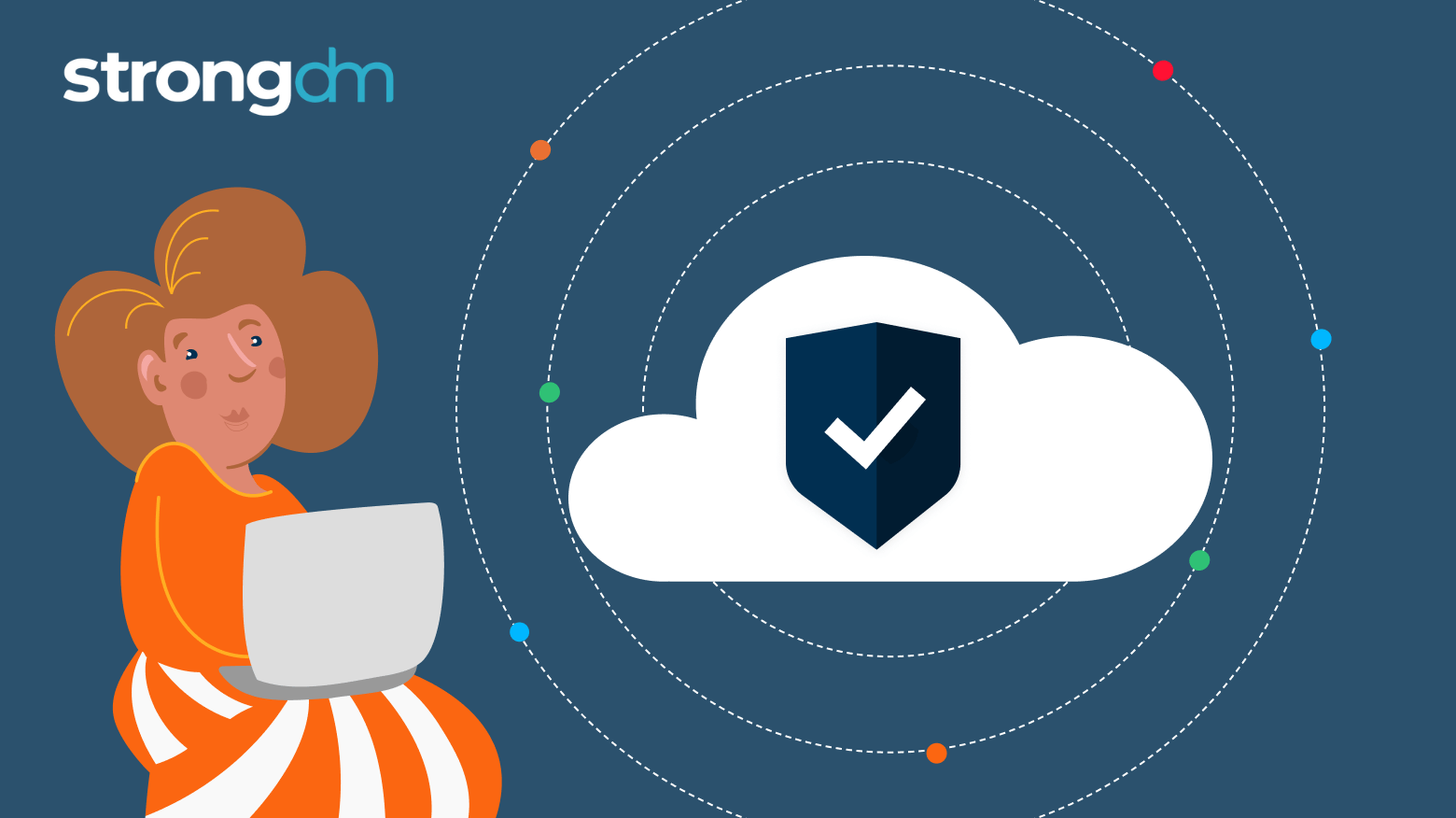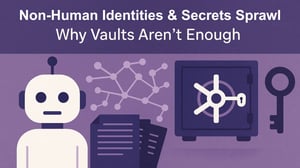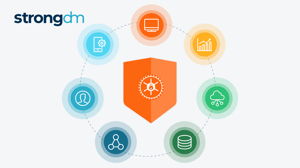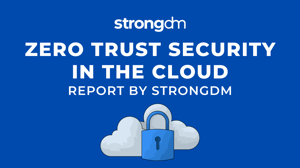What Is Zero Trust for the Cloud? (And Why It's Important)


Written by
John MartinezLast updated on:
October 17, 2025Reading time:
Contents
Built for Security. Loved by Devs.
- Free Trial — No Credit Card Needed
- Full Access to All Features
- Trusted by the Fortune 100, early startups, and everyone in between
As companies race to migrate critical workloads to the cloud, legacy security models are buckling under the pressure of managing the tangled web of cloud-native infrastructures, multi-cloud sprawl, and an increasingly remote workforce.
The concept of Zero Trust offers a modern approach to cloud security by shifting the focus from perimeter-based security to continuous authorization of every user, device, and action, ensuring only the right people can access the right resources at the right time. With cybersecurity threats like ransomware and data breaches on the rise, adopting Zero Trust has become crucial for safeguarding cloud environments and reducing the risks associated with unauthorized access and compromised credentials.
What Is Zero Trust for the Cloud?
Zero Trust cloud security is a cybersecurity model that operates on the principle that no user, device, system, or action should be trusted by default — even if it's inside your organization’s own network. This approach minimizes the risk of breaches and other cyber threats by limiting access to sensitive information and resources based on user roles, device security posture, and contextual factors.
Three key pillars form the foundation of the Zero Trust architecture.
1. Identity verification
According to Zero Trust principles, every user or device must go through a thorough authentication and authorization process before gaining access to any cloud resources. Instead of basic password protection, Zero Trust employs advanced methods for data protection, such as:
- Single sign-on (SSO)
- Biometric authentication
- Behavioral analytics
The goal is to verify that users are who they claim to be at all times. Doing so helps you avoid the potential exploitation of vulnerabilities within the system and minimize the risk of both insider threats and external attacks.
2. Least-privilege access
This role-based effort allows you to guarantee that users and systems are given only the minimum permissions they need to perform their tasks. Restricting access to sensitive data and systems helps reduce the attack surface and, therefore, the impact of any potential breaches. It also prevents attackers from moving laterally within the system if they gain access.
3. Continuous monitoring
Zero Trust frameworks rely heavily on keeping tabs on user behavior, network traffic, access patterns, and device health to detect anomalies or potential threats in real time. The ongoing surveillance, through real-time analytics, machine learning (ML), and automated threat detection, helps you quickly identify and respond to unusual activity. This empowers you to catch threats early and mitigate them before they can cause any harm.
Why Zero Trust Is Essential for Cloud Environments
Before the cloud, network perimeters provided a clear boundary for security. However, in the age of the cloud, data and applications are dispersed across various services and locations, making it challenging to maintain consistent security measures.
As a result, a staggering 91% of organizations across the globe have updated their security strategies. They're adopting advanced technologies such as Zero Trust solutions, AI-driven threat detection, and enhanced data encryption protocols to better protect their data and assets against evolving cyber threats.
The role of DevOps and automation in the cloud
DevOps and automation are playing an increasingly crucial role in boosting operational efficiency in the cloud. While these advancements enable rapid deployment cycles and workflow optimization, they also create significant security challenges by requiring the integration of additional tools.
The “never trust, always verify” principle comes in handy in cloud-native environments, where continuous integration and continuous delivery (CI/CD) pipelines and infrastructure as code (IaC) are often used.
DevOps teams can leverage Zero Trust implementation to:
- Secure DevOps pipelines: Granular access controls prevent unauthorized access to sensitive data and code repositories. They provide protection against supply chain attacks and data breaches.
- Safeguard automation workflows: Zero Trust can guarantee that only authorized automation scripts and tools can access and manipulate cloud resources. This reduces the risk of unintended or malicious actions.
- Enhance compliance: A robust Zero Trust protocol helps you meet industry-specific compliance requirements. It gives you a strong audit trail that reinforces your organization's security posture.
- Enable secure collaboration: The Zero Trust model facilitates secure collaboration between development, operations, and security teams in the cloud. It offers a common set of security policies and controls.
💡Make it easy: StrongDM simplifies managing access across complex cloud infrastructures and seamlessly integrates into DevOps pipelines, automating secure access management while ensuring Zero Trust principles are consistently applied throughout your cloud workflows.
Components of Zero Trust in Cloud Security
Implementing a Zero Trust architecture requires a comprehensive strategy in cloud security. The main aspects to focus on as you remain vigilant against potential threats include the following.
Identity and access management
Identity and access management (IAM) tools manage user identities across multiple cloud platforms. This involves implementing strict authentication processes, such as multifactor authentication (MFA), to verify users' identities, as well as least-privilege access.
Device and workload security
Employing security measures such as endpoint protection, vulnerability management, container security solutions, intrusion detection systems, and runtime security tools is key to robust workload security. Enforcing strict security policies on devices accessing the cloud helps you further protect sensitive data.
Network segmentation and micro-segmentation
Isolating workloads allows you to create secure zones within the cloud environment, limiting access based on specific policies. The granularity of this approach helps contain potential breaches and makes it more challenging for attackers to move freely through different parts of the network.
Data security and encryption
Protecting data, both at rest and in transit, keeps sensitive information secure, even if intercepted. In addition, implementing governance strategies helps you maintain compliance with data protection regulations.
Continuous monitoring and response
Real-time vigilance allows you to promptly identify anomalous behavior, potential breaches, unauthorized access attempts, and more. Coupled with automated response mechanisms, it helps you mitigate risks and reinforce your security posture.
💡Make it easy: StrongDM simplifies cloud identity management with real-time visibility into devices and workloads, ensuring secure, audited access. Its granular access control enables quick microsegmentation, while data encryption and logging ensure security and rapid anomaly response.
Benefits of Zero Trust for Cloud Environments
Adopting a Zero Trust framework can offer you a wide array of advantages. Some of the most notable include:
- Greater visibility and control: One of the primary perks of Zero Trust is that it gives you a detailed picture of who's accessing what in your cloud environment. With detailed access controls and continuous monitoring, this framework lets you track user activities as they happen.
- Speed and agility for modern cloud architectures: Implementing Zero Trust cloud security gives you the ability to quickly launch applications and services without dealing with old-school security hurdles. Plus, as you expand your cloud capabilities, it lets you seamlessly adopt new technologies without compromising on data safety.
- Reducing attack surfaces and minimizing risks: Enforcing strict access controls while breaking up your network into smaller, more secure segments helps you limit cybersecurity attacks. If a vulnerability is exploited, the damage is contained, preventing attackers from achieving their goals within your network.
💡Make it easy: StrongDM provides unparalleled visibility into who is accessing cloud resources, enforces least privilege and continuous monitoring to reduce attack surfaces, and ensures Zero Trust is implemented quickly without slowing down your cloud transformation.
Zero Trust Implementation: Best Practices for Cloud Security
Successfully implementing a Zero Trust model in the cloud is not just about adding a few more access controls. If you want to build a strong security framework with this approach, there are several best practices that will help you stay ahead of evolving threats.
1. Risk assessment and mapping
Before diving into policies, take some time to thoroughly assess where your most critical data lives and who needs to access it. When you map out the key assets and roles, you’ll have a clearer picture of how to apply Zero Trust. This model is not a one-size-fits-all solution. Knowing what’s most important for your organization will help you focus your security efforts where they're needed most.
2. Micro-segmentation for cloud workloads
To stop attackers in their tracks, break your network into isolated zones. Doing this will help you limit the damage attackers can do if they do get in. Instead of roaming across the network unhindered, they'll hit barriers at every turn. This will reduce the chance of lateral attacks.
3. Integrating Zero Trust into DevOps pipelines
Embedding security checks and compliance measures throughout the development cycle empowers you to catch potential vulnerabilities early on. It’s about being proactive rather than reactive, so your cloud-native apps are secure from the get-go.
4. Continuous monitoring and real-time response
Cloud security is a 24/7 job. Setting up automated monitoring tools gives you the real-time visibility you need to stay ahead of emerging threats. This way, when your systems detect an anomaly, you can instantly respond and mitigate the risks before they escalate into full-blown breaches.
💡Make it easy: StrongDM simplifies risk assessment with tools to map and control user access, streamlines microsegmentation to isolate workloads and prevent lateral attacks, integrates security into every stage of your DevOps pipelines, and ensures real-time monitoring and automated threat detection to stay ahead of potential threats.
Zero Trust Cloud Use Case
Zero Trust cloud security has become a necessity for all types of organizations handling sensitive data. The use cases of this cybersecurity model span various industries, particularly as remote work becomes the norm. A great example of this is Clarity AI, a sustainability tech platform that uses machine learning to provide investors with environmental insights.
Partnering with StrongDM, Clarity AI eliminated the complexities of virtual private networks (VPNs). This simplified access capabilities and bolstered security visibility. StrongDM’s just-in-time privileged access and detailed audit logs replaced a system that was prone to administrative challenges and potential failure points. It also aided in the organization's ISO 27001 compliance journey by delivering comprehensive monitoring and real-time logging.
Clarity AI is a prime example of how to successfully transition to a more scalable and secure Zero Trust model. StrongDM offered a solution that was cost-effective and provided the necessary security for growing cloud-based operations without sacrificing productivity.
Simplify Zero Trust for the Cloud With StrongDM
As cloud solutions grow in popularity, it's crucial to stay proactive in protecting your data and systems. If you’re already on board with this trend, make sure you don't let your guard down on cybersecurity matters. StrongDM offers a unified solution that simplifies Zero Trust adoption across cloud infrastructures. It gives organizations like yours visibility, control, and security for their critical cloud resources and user access.
Ready to learn more about what we can do for your business? Book a demo today!
Next Steps
StrongDM unifies access management across databases, servers, clusters, and more—for IT, security, and DevOps teams.
- Learn how StrongDM works
- Book a personalized demo
- Start your free StrongDM trial

Categories:

About the Author
John Martinez, Technical Evangelist, has had a long 30+ year career in systems engineering and architecture, but has spent the last 13+ years working on the Cloud, and specifically, Cloud Security. He's currently the Technical Evangelist at StrongDM, taking the message of Zero Trust Privileged Access Management (PAM) to the world. As a practitioner, he architected and created cloud automation, DevOps, and security and compliance solutions at Netflix and Adobe. He worked closely with customers at Evident.io, where he was telling the world about how cloud security should be done at conferences, meetups and customer sessions. Before coming to StrongDM, he lead an innovations and solutions team at Palo Alto Networks, working across many of the company's security products.
You May Also Like




